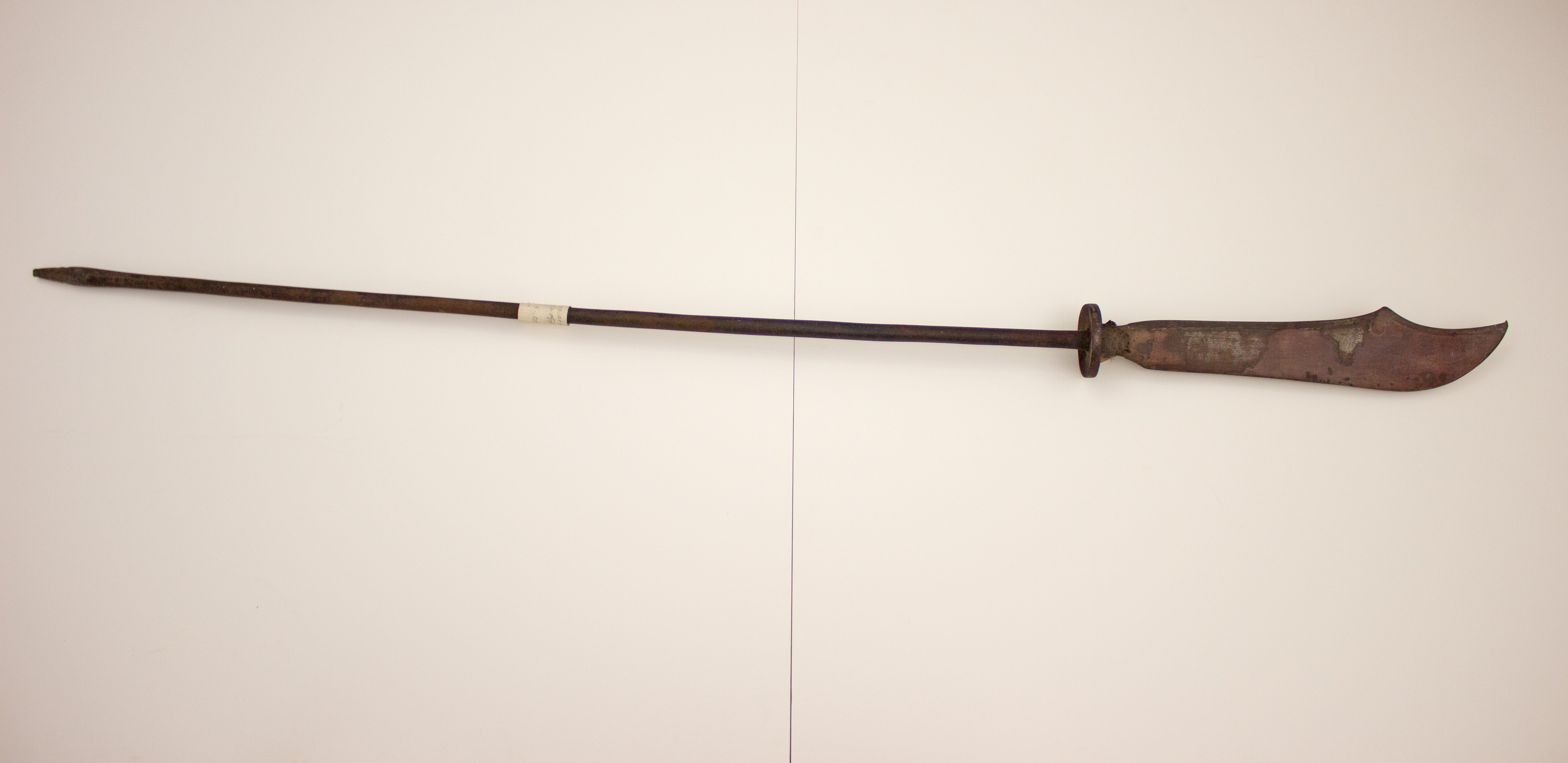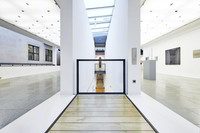A heavy halberd resp. polearm that is completely from iron and has a broad blade that resembles the shape of a glaive. The blade has a bent point and, on the spine, an additional pike. Along the spine there is an ornamental line engraved. Between shaft and blade, there is a round guard and a decorative element from brass that is not completely preserved. The shaft is from iron and first thickened on the end before it ends in a tip. On the bottom of the shaft, there are ornaments engraved.
Presumably, it is a form of the Chinese "Da Dao". "Da Dao" in general means "great sabre" and refers to diverse forms of weapons with large blades, from knives and swords up to polearms. The best-known form of the Chinese polearms is the "Guan Dao". Typical for old Chinese Da Dao polearms are besides the round guard the pointed end of the shaft as well as the high weight. The heavy exemplars served especially for the training and testing of the soldiers' strength.
en

